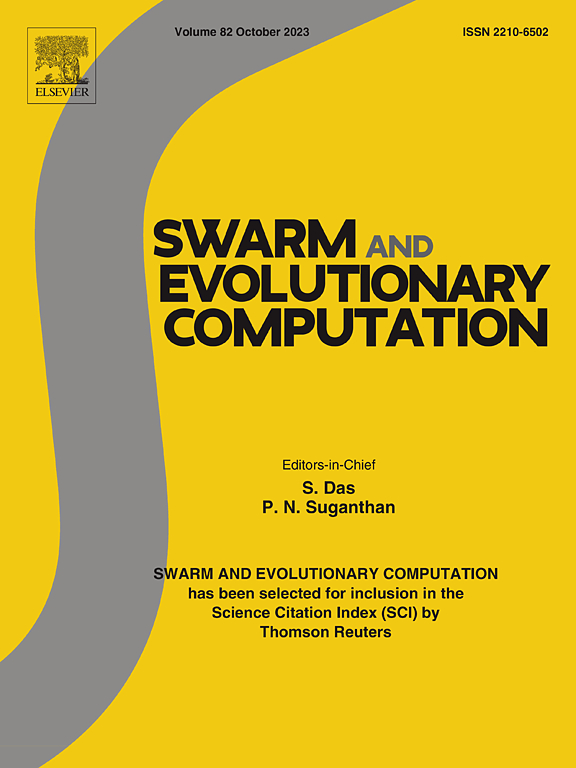A correlation-guided cooperative coevolutionary method for feature selection via interaction learning-based space division
IF 8.2
1区 计算机科学
Q1 COMPUTER SCIENCE, ARTIFICIAL INTELLIGENCE
引用次数: 0
Abstract
Feature selection (FS) is an important data preprocessing technique that optimizes the learning process and results by selecting a small subset of features. With the increasing of data dimension, challenges such as high computational complexity and the tendency to fall into local optima also appear. Cooperative Coevolution (CC) shows promising prospects in FS because of its “divide and conquer” approach, which decomposes a complex high-dimensional problem into several lower-dimensional subproblems to solve simultaneously. However, most existing CC-based FS methods suffer from issues such as the coarse space division, inadequate subspace exploration, singular collaboration model, and costly fitness evaluations. To alleviate these limitations, we propose a CC method via interaction learning-based space division for high-dimensional FS problems. First of all, this method proposes an interaction learning-based space division method, which divides the whole feature space into several subspaces of different importance. Then, a correlation-guided search strategy is designed to select relevant features, eliminate redundant features, and escape local optima. Finally, a surrogate-assisted particle recombination strategy also explores the combinatorial performance of non-optimal particles across different subswarms to ensure the comprehensiveness of the exploration and the efficiency of evaluations. The results on 16 typical datasets show that the proposed method evolves the feature subset with the lowest number of features and highest classification accuracy compared to seven state-of-the-art algorithms.
求助全文
约1分钟内获得全文
求助全文
来源期刊

Swarm and Evolutionary Computation
COMPUTER SCIENCE, ARTIFICIAL INTELLIGENCEC-COMPUTER SCIENCE, THEORY & METHODS
CiteScore
16.00
自引率
12.00%
发文量
169
期刊介绍:
Swarm and Evolutionary Computation is a pioneering peer-reviewed journal focused on the latest research and advancements in nature-inspired intelligent computation using swarm and evolutionary algorithms. It covers theoretical, experimental, and practical aspects of these paradigms and their hybrids, promoting interdisciplinary research. The journal prioritizes the publication of high-quality, original articles that push the boundaries of evolutionary computation and swarm intelligence. Additionally, it welcomes survey papers on current topics and novel applications. Topics of interest include but are not limited to: Genetic Algorithms, and Genetic Programming, Evolution Strategies, and Evolutionary Programming, Differential Evolution, Artificial Immune Systems, Particle Swarms, Ant Colony, Bacterial Foraging, Artificial Bees, Fireflies Algorithm, Harmony Search, Artificial Life, Digital Organisms, Estimation of Distribution Algorithms, Stochastic Diffusion Search, Quantum Computing, Nano Computing, Membrane Computing, Human-centric Computing, Hybridization of Algorithms, Memetic Computing, Autonomic Computing, Self-organizing systems, Combinatorial, Discrete, Binary, Constrained, Multi-objective, Multi-modal, Dynamic, and Large-scale Optimization.
 求助内容:
求助内容: 应助结果提醒方式:
应助结果提醒方式:


